

The arrival of the railways in Victorian Britain led to the adoption of a standardised time system throughout the country in the 1840's. This in turn led to the development of showpiece railway clocks for the great city terminals.
The great cities of Scotland, Edinburgh and Glasgow, produced two of the grandest clock towers of the time, loftily displaying their clock faces to all quarters.
Clock tower at Waverley Station, Edinburgh
One of Scotland's most prominent clock towers is situated at the eastern end of Edinburgh's Princes Street, where the railway runs alongside the gardens overlooked by the castle.
The tower was built as part of the North British Railway Hotel at Waverley Station, Edinburgh's mainline terminal. It is now known as the Balmoral Hotel.
The original sign announcing the opening of the new hotel at Waverley Station in Edinburgh is preserved at the National Railway Museum at York.
Clock tower at Central Station, Glasgow
The sandstone clock tower at Glasgow Central Station was designed by Edinburgh based architect, Robert Rowand Anderson.
Travelling 102 miles south of Glasgow Central, Carlisle Station is the first stop across the border in England on the West Coast Main Line. The station was designed by Sir William Tite in 1847 and completed in 1848. Tite was a pioneering railway architect who designed stations for the Caledonian Railway between 1847 and 1850. His work for the company came to an abrupt end with a big fall-out and he had to go to court in 1851 to recover his professional fees. Clock tower at Carlisle Station, Cumbria
The southern terminal of the West Coast Main Line is Euston Station in London, which was built in 1837 before the adoption of Greenwich Mean Time as the standardised railway time. Euston Station, which was the earliest inter-city station in London, was redeveloped in the early 1960's when its Victorian charm was lost forever. Monumental Arch at Euston Station, London, demolished 1961
After the Euston Arch was dismantled in 1961, the gates were preserved and can now be seen at the National Railway Museum in York.
The ornamnental iron gates for Euston Arch
The elaborate cast iron gates for the Doric portico were fabricated by J.J. Bramah. Although the gates look quite large on display, old photographs show them to be dwarfed by the huge structure which once surrounded them.
There are however two railway clock towers to be found at the other mainline stations in Euston Road, which were developed later. The clocks at St Pancras and Kings Cross Stations are still there to inform travellers of the time when rushing for their trains.
Clock tower at St Pancras Station, London
The clock tower at St Pancras Station in London was constructed with red brick and stone from the English Midlands, transported to the site by railway.
The Midland Grand Hotel was completed in 1873.
The use of contrasting shades of building materials allowed Scott to fully develop his polychromatic colour scheme for the building.
Clock tower at Kings Cross Station, London
The clock tower at Kings Cross is much plainer than its other big city rivals. The simplicity of the design and the use of plain brick gives it a modern feel not usually associated with Victorian clock towers.
Clock tower at Marylebone Station, London
The clock tower at Marylebone Station in London has a polychromatic colour scheme like St Pancras, although its overall shape is more akin to the Scottish clock towers than to others in London. The architect was Robert. W. Edis, who topped the tower with a delicate copper crown.
Clock at Victoria Station, London
The enormous clock at the entrance to Victoria Station in London is surrounded by elaborate sculptures.
The carved white limestone contrasts beautifully with the red sandstone of the building below and the black slate of the roof.
Clock at Waterloo Station, London
The clock at Waterloo Station on the south bank of the River Thames is placed above the station entrance, which was built as a war memorial. The Victory Arch was part of the station's external reconstruction carried out between 1919 and 1922, shortly after the end of the Great War.
Clock tower at Temple Meads Station, Bristol
The clock tower at Temple Meads Railway Station in Bristol was built in the 1870's when the station was expanded. The tower was designed by Matthew Digby Wyatt in the style of a castle, complete with battlements.
Drawing of clock at entrance to Bath Spa Railway Station, Somerset
Bath Railway station was designed around 1840 by the famous engineer, Isambard Kingdom Brunel. It was constructed with locally quarried limestone, similar to that used for Bath's more famous buildings. The clock is situated over a decorative balustrade in the centre of three Flemish styled stepped gables at the main entrance to the station.
The clock tower at Scarborough Station on the Yorkshire coast was part of a later addition to the original station which had opened for business in 1845. Clock tower at Scarborough Station, Yorkshire
The clock tower at Darlington Station was designed by architect William Bell in collaboration with Mr. T.E. Harrison, chief engineer of the North Eastern Railway. The station was opened in 1887. Clock tower at Darlington Station, Co.Durham
Botanic Gardens Station, Glasgow, was designed by the prolific local architect, James Miller in a highly ornamental style to match its surroundings. It opened in 1896 and closed permanently in 1939. The station building survived until 22 March 1970 when it was destroyed by fire. Clock tower at former Botanic Gardens Station, Glasgow
Connolly Station in Dublin, Ireland, was originally known as Amiens Street Station when it opened in 1844. The central entrance has an unusual Italianate clock tower designed by local architect, William Deane Butler.
Clock tower at Connolly Station, Dublin
On the other side of the Atlantic they have railroad stations rather than railway stations and the finest of them all is the Grand Central Terminal in New York City.
On 42nd Street, at the entrance to the largest station in the world, travellers are greeted by beautiful sculptures of Mercury, Hercules and Minerva designed by Jules-Felix Coutan.
Clock at Grand Central Terminal, New York City
Clock at Pennsylvania Station, New York City, demolished 1963
New York's other great railroad terminal, the Pennsylvania Station, lost its monumental clock in 1963 when the original station of 1910, designed by Charles McKim, was demolished.
Clock and sculpture at Union Station, Washington D.C.
The magnificent clock at Union Station, Washington D.C. is surrounded by sculpture by Augustus Saint-Gaudens, completed in 1908. The Roman centurions flanking the clock are part of a large group to be found in and around the station. With its grand design and lavish decoration, Union Station is a worthy rival for the Grand Central Terminal in New York City.
Rather than local time, Greenwich Mean Time was used, no matter how far east or west of London you were.
Timetables were produced without the need for adjustment for location.
Large clocks were prominently displayed outside major stations, keeping intending passengers informed about the time for their railway departures and arrivals.
This gave the opportunity for the railway companies to create some beautiful architecture and sculpture with clocks placed in fancy towers and over elaborate station entrances.
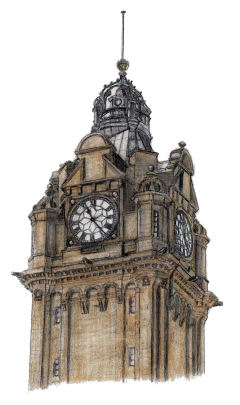
The architect of the hotel was W. Hamilton Beattie who had won the design competition in 1895. The clock tower was completed in 1902 and now forms a familiar landmark that can be seen from almost any spot in the capital's principal street.
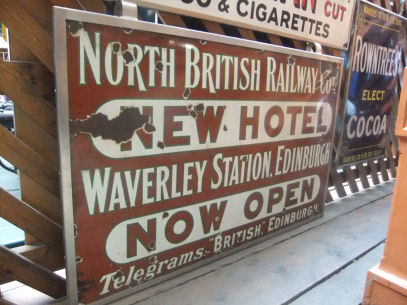
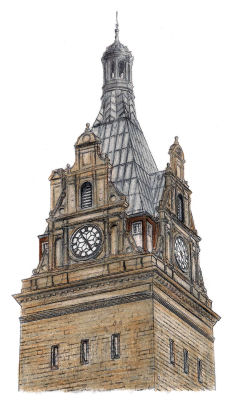
The tower sits over the Grand Central Hotel, which can be entered directly from the station concourse.
The hotel with its gigantic clock tower was completed in 1884, five years after the railway had crossed the River Clyde to the newly opened Central Station.
Like the tower at Edinburgh Waverley Station, the summit is clad in lead.
The station was built with a decorative clock tower (below), featuring a turreted octagonal top.
Carlisle Citadel Station was a joint station, built for four different companies. It accommodated traffic from the Caledonian Railway and the Lancaster and Carlisle Railway, which linked up to provide the northernmost part of waht is now the West Coast Main Line.
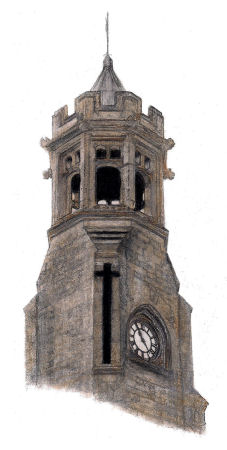
When the station opened it had a “Master Regulator Clock” which was used to set the guards' chronometers, which in turn synchronised the clocks at the various stations en route.
Rather than a clock tower, visitors to the station were greeted by a huge Doric portico, the Euston Arch, which was designed by Philip Hardwick as a symbolic gateway from the metropolis.
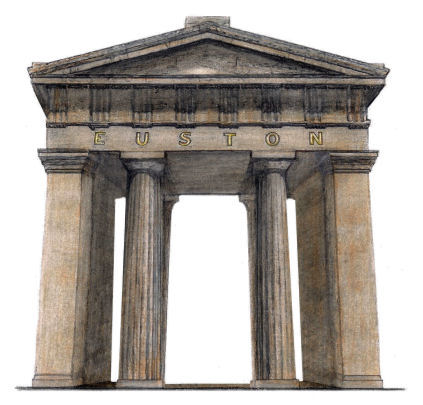
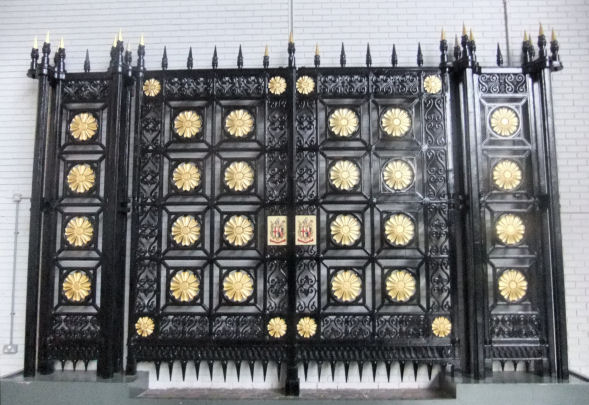
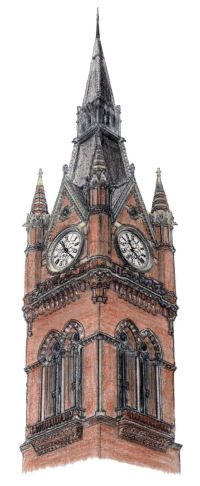
The tower formed part of the Midland Grand Hotel, which fronted the station. It was designed by George Gilbert Scott, a champion of the Victorian Gothic Revival style of architecture.
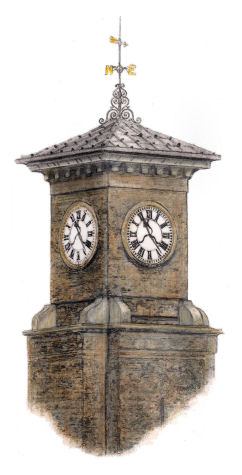
The station was completed in 1852 with a frontage very much as it is today, centred on the clock tower with two huge glazed arches either side. The architect of the station was Lewis Cubitt.
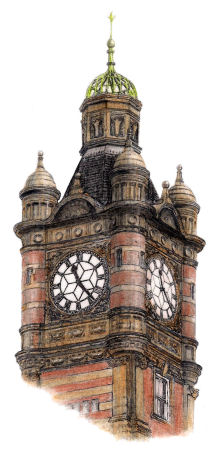
The tower was built as the centrepiece of the Great Central Hotel, one of the most opulent of London's many railway hotels. Both the station and the hotel opened for business in 1899.
After World War II the hotel served as the headquarters of the nationalised British Railways Board until 1991, after which it reverted to its original purpose as a luxury hotel. The Great Central Hotel has been known as the Landmark Hotel since 1995.
Between the station and the hotel there was an elaborate cast-iron canopy to protect visitors from the elements. This “porte-cochère” was restored and brought back into use in 1993.
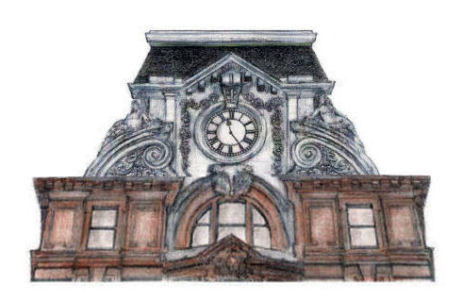
It was constructed in 1907 as part of the rebuilt Grosvenor Hotel at the station entrance for the Brighton line.
The reconstruction of the station and the hotel was managed by Charles Morgan, the London Brighton & South Coast railway company's chief engineer.
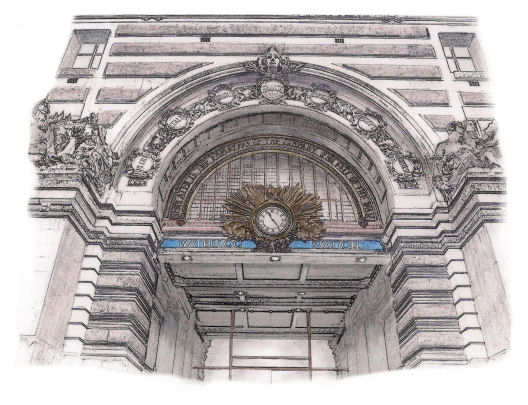
The clock is surrounded by a bronze sculpture, which could either be viewed as a sunburst or an exploding bomb.
Waterloo is the largest and busiest station in London and in the whole of the U.K.
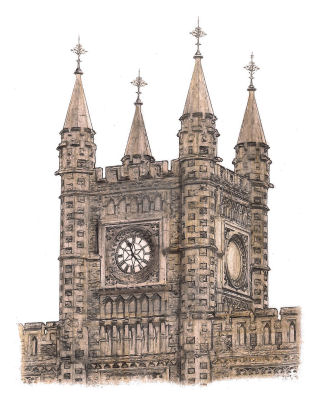
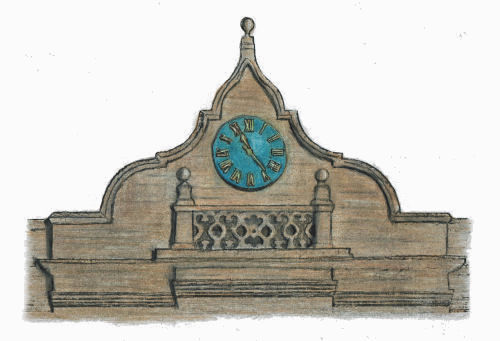
The richly decorated tower, which was completed in 1882, is topped with a leaded dome and provides a very interesting landmark in this beautiful seaside town. The tower was designed by William Bell, chief architect of the North Eastern Railway, and the clock was supplied and fitted by Potts of Leeds in 1884.
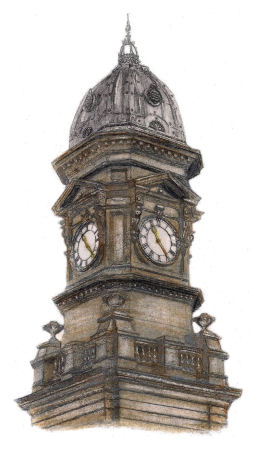
The contrasting use of engineering brick on the tower and cream sandstone around the clock face and ballustrades gives the landmark structure a distinctive appearance.
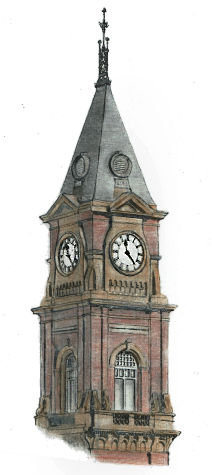
The outstanding feature of the station were the two identical clock towers topped by oriental style gilded domes.
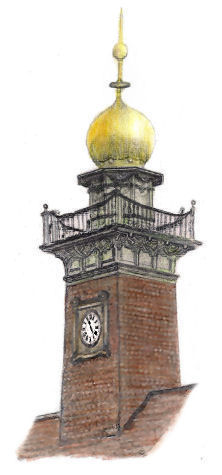
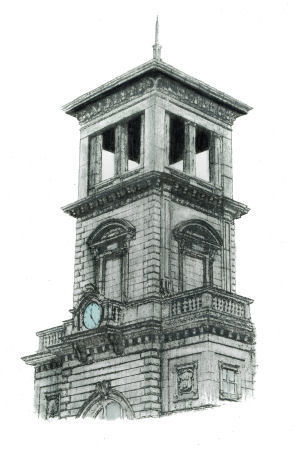
Situated among the skyscrapers of Manhattan there would be no point in having a clock tower, so the grandeur of the place is expressed by a sculptural composition completed in 1914.
The centrepiece of the composition is an elaborate clock decorated by Tiffany, the famous New York jewellers.
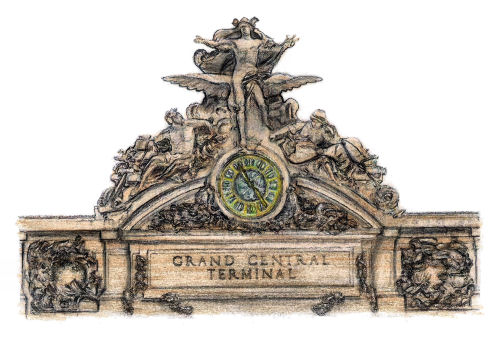
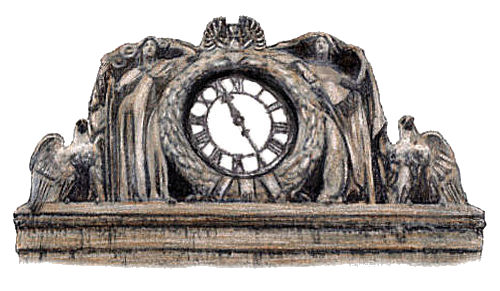
The sculptural arrangement at the clock is themed on "Night and Day", with the lady on the left carrying little suns to represent daylight and the lady on the right looking out from the darkness of her garments. The statues, flanked by a pair of American eagles, were the work of German-American sculptor, Adolph Weinman.
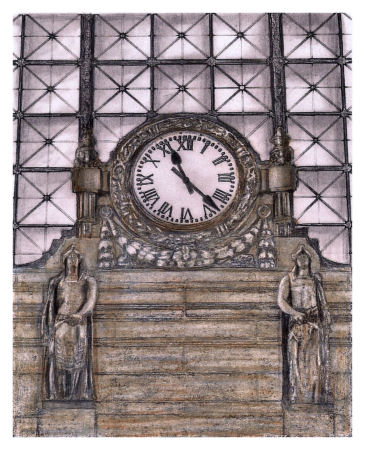
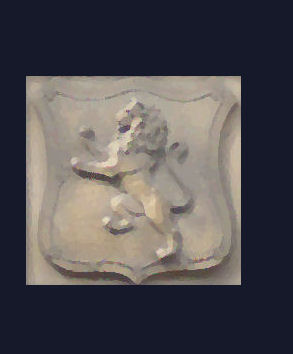 |
| |
|
|
| |
|
|
| |
|
|
| |
|
|
| |
|
|
| |
|
|
| |
|
|
|
|
|
All original artwork, photography and text © Gerald Blaikie
Unauthorised reproduction of any image on this website is not permitted.